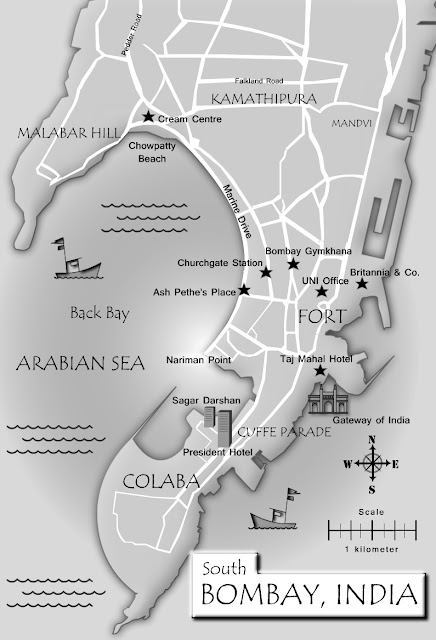What lengths would you go to in order to get the geography right in your books? Is it okay to take liberties?
In fiction, geography, like history and guns, is all about the details. It’s important to get those details right, or you risk incurring the wrath
of outraged readers. Expect supercilious e-mails that tell you where you went wrong. Or worse, angry e-mails. That’s why you must have a strategy.
First, always remember that you, the writer, are in charge. You decide which details to include in your books and stories. How sharp is the focus of your descriptions? How granular are the details you provide to the reader? You’re in the driver’s seat, so you pick the route.
Say you want to include a handgun in a scene. What kind is it? Revolver? Single-shot pistol? Semi-automatic pistol? You really don’t need to know, as long as you’ve made the room dark enough and your protagonist escapes without a wound. You made up that scene. Blur the focus if you like. Or dim the lights.
The same goes for history. Not sure which stamp was in use in 1898? Don’t dwell on it. Too much detail can stink of research anyway. Suffice it to say “she affixed the stamp and handed the letter to the postal clerk.”
This works for geography as well. While I care about getting details right, I sometimes allow myself the out of glossing over them. Other times, I research obsessively, because you have to create the illusion of your fictional world, after all, and real-life places can help you achieve that.
In my Ellie Stone series, I debated whether to use my actual hometown of Amsterdam, NY, as the setting. I knew it well and felt confident I could paint a convincing picture of life there. That would surely translate to an effective sense of place for readers. But my books are set in the early 1960s, and I feared I would surely make mistakes the local citizenry would spot. So I followed my own advice and decided to take the wheel and drive. I fictionalized the city and made all worries of inaccuracies disappear in a puff of smoke. Or exhaust, if I’m committed to this metaphor. Residents of my hometown would recognize places, even as they knew the town had a different name and different geography. My fictional New Holland, NY, sits on the exact spot Amsterdam does in real life, yet I can describe it however I want, without fear of contradiction.
I also created a fictional locale in Heart of Stone, the fourth Ellie Stone mystery, in the form of the picturesque Adirondack village of Prospector Lake. Much easier to invent a resort than to recreate, say, Lake George in 1961. Here’s the map from the book.
Fictionalizing a location may not always solve the problem. In my recent Sherlock Holmes story, “The Twenty-Five-Year Engagement,” I set the action in 221B Baker Street, London, which is, of course, a fictional address itself. But its fame is such that it might as well be real. So I had to describe it, and 1880s London, as faithfully as possible in my story. Since this was a 6,000-word story, however, I didn’t need to dwell too much on such minute details. Readers were already familiar with the setting, so only barest descriptions were in order.
For my latest book, Bombay Monsoon (news on that coming very soon), the setting is 1975 Bombay, India. And, you might have guessed, during the monsoon… This location and time period demanded lots of serious research. Fortunately for me, I know the city well and have several close sources who lived in Bombay at that time. They helped me get the facts and geography right. Much of Bombay was reclaimed from the sea, after all, and its geography has changed dramatically over the centuries. I also consulted travel guides from the era, as well as maps, newspapers, and photographs. And when I could not establish some detail with absolute certainty, I left it out or blurred the focus.
Here’s a map (in progress) for Bombay Monsoon. It’s vague enough to reflect 1975 accurately. Like Florence, many of Bombay’s landmarks remain the same. The name, however, has, of course, changed to Mumbai.
Remember that you are in the driver’s seat and can negotiate the geography of your story with selective details and blurred focus. Or, I suppose, with intense research and unflinching honesty with yourself. As I always say, know what you don’t know.




2 comments:
I wrote a nice, twisty mystery set on an island where we have long spent winters . . . but the island was decimated by Hurricane Dorian in 2019. I was in edits, but shelved the ms - now the police station is in a new building; almost nothing is as I portrayed it. I also think it's important to use accurate details (as far as you include them) in any real setting. Re-writing!
Amsterdam, NY is my hometown, too, and I love recognizing the scenes in your Ellie Stone mysteries from the 1960s, but I wouldn't send you an angry email if you got my street wrong...you're writing fiction. I have a few scenes from today's Amsterdam in my new time travel novel, Where the Stork Flies, but I did move a few stores around...not sure if I'll get a reaction to that.
Post a Comment